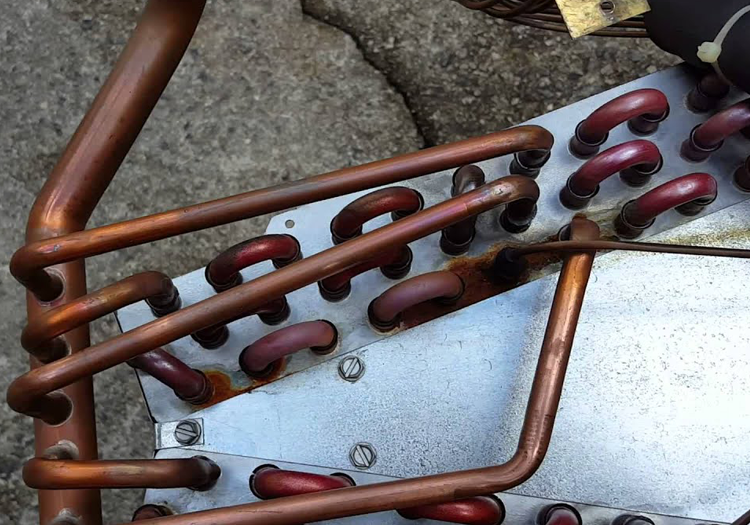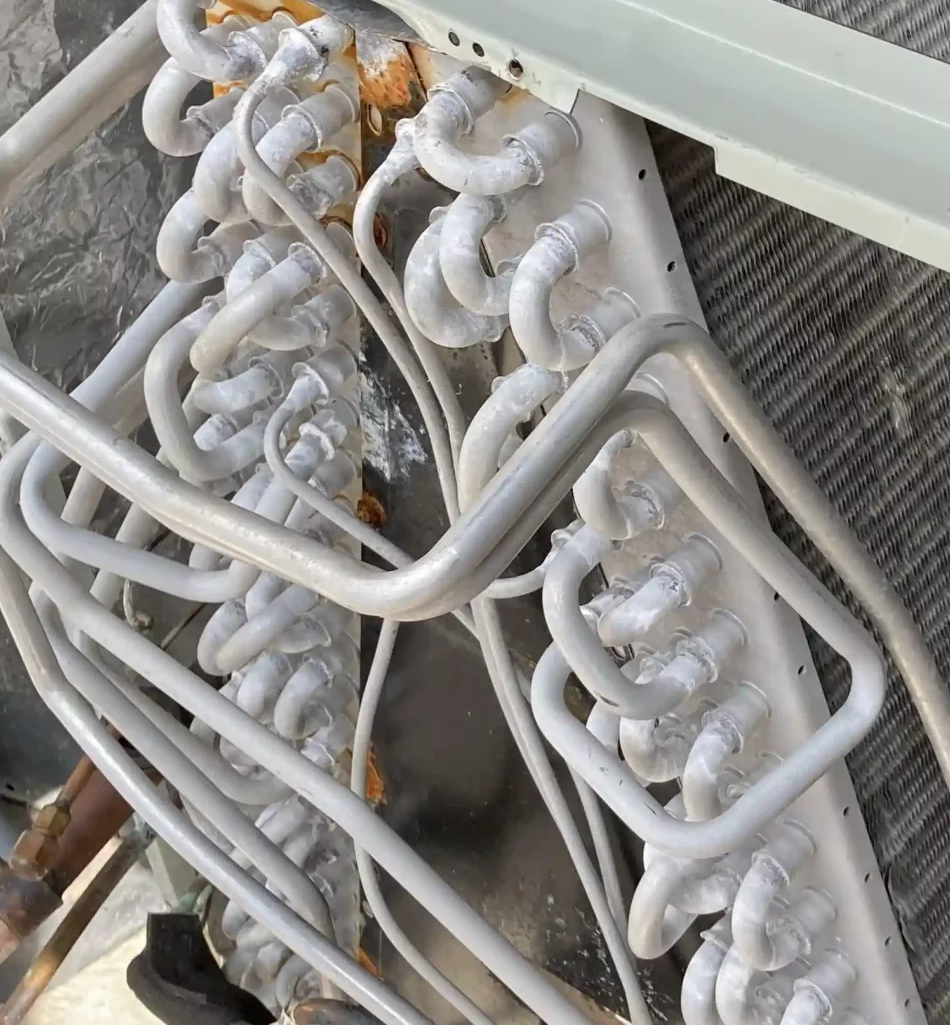In any HVAC system along the Wasatch Front, lets say in Kaysville, the evaporator coil is a critical component responsible for absorbing heat from indoor air, which allows the system to cool your home effectively. However, dirty or frozen evaporator coils can severely impact the efficiency of your air conditioning system, leading to higher energy bills, poor performance, and even system failure. Understanding the common issues related to evaporator coils and taking preventive measures can help ensure your HVAC system runs smoothly and efficiently.
Evaporator coils play a central role in the cooling process. Located within the indoor unit of your HVAC system, these coils contain refrigerant, which absorbs heat from the air inside your home. Once the refrigerant captures this heat, it travels to the outdoor condenser unit, where the heat is released, and the cooling cycle repeats.
Evaporator coils are usually made of copper or steel tubing, and they are surrounded by aluminum fins, which help with the heat exchange process. However, their efficient performance can be compromised when they become dirty or frozen.

Over time, the evaporator coils are exposed to dust, dirt, and debris that circulate within the HVAC system. For those older homes in the likes of Kaysville, this is the most likely scenario. A clogged air filter, lack of regular maintenance, or poor indoor air quality can lead to dirty evaporator coils, affecting the system’s ability to cool effectively. Some common causes of dirty evaporator coils include:
The air filter in your HVAC system is designed to trap dust, pollen, and other contaminants before they reach sensitive components like the evaporator coils. However, if your filter is clogged or of poor quality, these particles can bypass the filter and accumulate on the coils, leading to reduced cooling efficiency.
HVAC systems require regular maintenance to ensure peak performance. Failing to schedule routine inspections and cleanings can result in dirt buildup on the evaporator coils. Over time, this can restrict airflow and make it harder for the system to remove heat, reducing the overall efficiency of your air conditioner.
Dust and debris inside the ductwork can also find their way onto the evaporator coils. If your air ducts are not properly sealed or cleaned regularly, the circulating air can carry particles that cling to the coils, causing them to become dirty and less efficient.

Dirty evaporator coils can lead to a range of issues that negatively impact both the performance and lifespan of your HVAC system. Some of the most significant effects include:
When the evaporator coils are coated in dirt, they are unable to absorb heat efficiently, which leads to reduced cooling capacity. This means that your system has to work harder to cool your home, resulting in longer run times and higher energy consumption.
As your air conditioner struggles to maintain the desired temperature, it consumes more electricity. Over time, dirty evaporator coils can cause a noticeable increase in your monthly energy bills, which is why regular coil cleaning is essential.
Restricted airflow caused by dirty coils can lead to system overheating. When your HVAC system overheats, it may shut down unexpectedly or even cause permanent damage to critical components like the compressor. This can result in costly repairs or premature system failure.
We see in the neighborhoods like are found in Kaysville, Utah, in addition to dirt buildup, evaporator coils also freeze under certain conditions. Frozen evaporator coils are often the result of poor airflow, low refrigerant levels, or even extreme weather conditions. Here’s what you need to know about the causes and solutions for frozen coils.
Just like with dirty coils, restricted airflow can cause the evaporator coils to freeze. When there isn’t enough warm air moving over the coils, the refrigerant can become too cold, causing moisture in the air to freeze and form ice. Common reasons for restricted airflow include:
Another common cause of frozen evaporator coils is low refrigerant levels. If your system is leaking refrigerant, the pressure inside the evaporator coil can drop, causing the temperature to fall below freezing. As a result, moisture from the air freezes on the coils, which can eventually lead to a complete system shutdown if not addressed promptly.
An improperly set thermostat can also cause frozen evaporator coils. If the thermostat is set too low or is malfunctioning, the HVAC system may run continuously, which can cause the coils to freeze.
Recognizing the symptoms of frozen evaporator coils early can help prevent major system issues. Here are a few signs that indicate your evaporator coils might be frozen:
If you notice any of these signs, it’s essential to turn off your air conditioning system and contact a professional HVAC technician to inspect and repair the issue.
Preventive maintenance is the key to avoiding both dirty and frozen evaporator coils. By keeping your system clean and well-maintained, you can avoid the inefficiencies and costly repairs associated with coil issues. Here are some practical tips to keep your coils in optimal condition:
Replacing your air filters regularly can significantly reduce the amount of dirt and debris that enters your system. It’s recommended to check your filters monthly and replace them every 1-3 months, depending on your home’s air quality and system usage.
Professional HVAC maintenance should be scheduled at least once a year to ensure that your system is operating at peak efficiency. During this service, a technician will clean the evaporator coils, check for refrigerant leaks, and inspect other critical components of your system.
Dirty ductwork can circulate dust and debris into your system, leading to dirty evaporator coils. Regular duct cleaning can help improve indoor air quality and prevent coil contamination.
Make sure that all vents and registers in your home are open and unobstructed to maintain proper airflow. Additionally, keep furniture and other items away from your HVAC system’s return air ducts.
If your system is low on refrigerant, it’s essential to have a professional inspect the system and repair any leaks. Low refrigerant levels not only lead to frozen coils but can also cause damage to other components of the HVAC system.

Whether you are in Kaysvile, or anywhere else in northern Utah maintaining clean and efficient evaporator coils is crucial for ensuring that your HVAC system operates effectively and efficiently. Dirty or frozen evaporator coils can lead to reduced cooling capacity, higher energy bills, and even system failure if left unchecked. By following preventive maintenance practices and addressing issues promptly, you can extend the life of your air conditioner and avoid costly repairs.
If you feel that your Evaporator Coils are needing some attention, click here to schedule one of our techs to come out and check the system for you, we are already in the neighborhood!